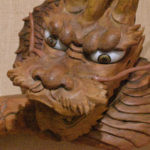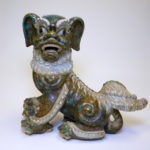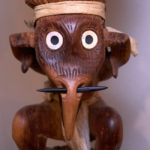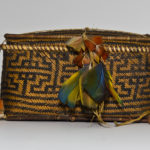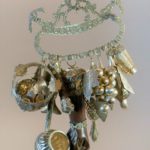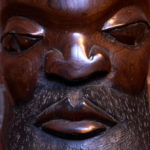
The wood carved dragon is from an ancient Buddhist temple south of Tokyo. One of the temple chapels was about to collapse because the entire foundation was cracked and sinking. As workmen were carefully taking apart the building piece by piece they found a dragon in a cardboard box. It was in terrible condition: broken with the head separated from the body. The legs and claws were missing, and parts were badly worm-eaten. Some parts had a thin layer of clay indicating that it had once been gilded. After sanding off the worm-eaten and damaged portions only about 70% of the original was left. The scientists responsible for assembling the Tyrannosaurs Rex at the Denver Museum of Nature and Science fabricated the missing horns and were responsible for restoring 30% of this dragon.
In Zen Buddhism the dragon of the sky (lightening) is symbolic of the sudden flashes of insight during meditation which can possibly lead to enlightenment. This particular dragon is in the style of the Kamakura period (1185-1333).

